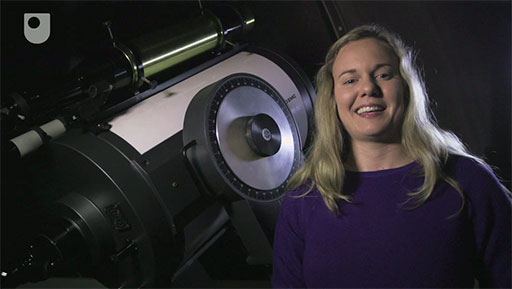Week 4: Our Moon
Introduction
Introducing the only moon you can see with the naked eye, how does it measure up against the others, what’s under the surface and how far away is it? What did early missions to the Moon discover, and why would we want to return?

Transcript
On Wednesday 15 March, 2017, Open University academic David Rothery and his colleague Ian Wright, who is a member of the Rosetta team that studied comet 67P, joined OU planetary science students in a live ‘planets and moons’ video webcast [Tip: hold Ctrl and click a link to open it in a new tab. (Hide tip)] .
On Wednesday 15 November, 2017, David’s guest in the next planets and moons chat was Monica Grady, an expert on meteorites and certain aspects of Mars. You may find it of interest to watch these webcasts, plus older ones and others to be added in the future. Those can be found easily from these links.
By the end of this week, you should be able to:
- recognise the many cultural references to the Moon, from music to art and literature
- understand more facts about the Moon
- calculate the distance to the Moon.
See also:
- Planets and moons chat 15 March 2017. Here is the link for the recording of live webcast that was made 1930-2015 on Weds 15 March 2017.
- Planets and moons chat link, for 15 November 2017. Click this link for the recording of the webcast with David Rothery and Monica Grady.
